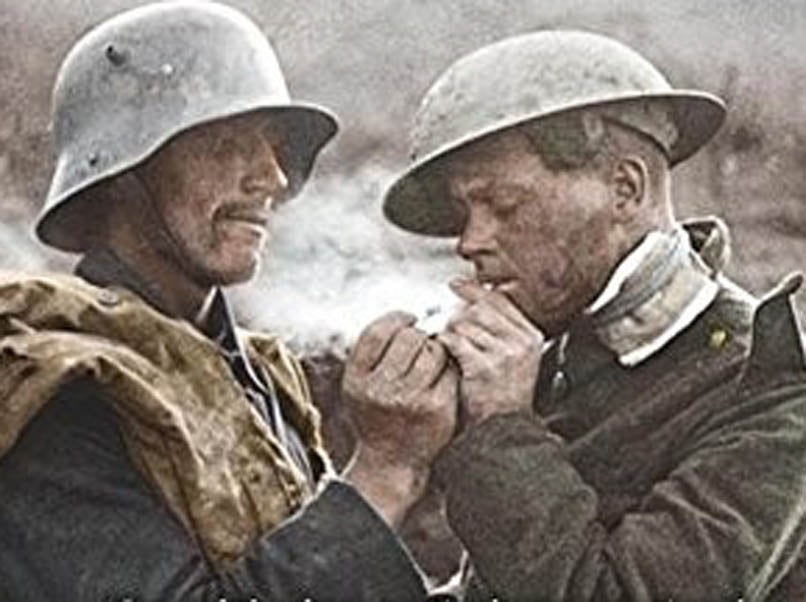Fritz and Tommy: Across the Barbed Wire, by Peter Doyle and Robin Schäfer - book review
Peter Doyle and Robin Schäfer share authentic voices of these men along the length of the Western Front 100 years on

Your support helps us to tell the story
From reproductive rights to climate change to Big Tech, The Independent is on the ground when the story is developing. Whether it's investigating the financials of Elon Musk's pro-Trump PAC or producing our latest documentary, 'The A Word', which shines a light on the American women fighting for reproductive rights, we know how important it is to parse out the facts from the messaging.
At such a critical moment in US history, we need reporters on the ground. Your donation allows us to keep sending journalists to speak to both sides of the story.
The Independent is trusted by Americans across the entire political spectrum. And unlike many other quality news outlets, we choose not to lock Americans out of our reporting and analysis with paywalls. We believe quality journalism should be available to everyone, paid for by those who can afford it.
Your support makes all the difference.At Beaumont-Hamel, in the Somme department of northern France, there remain some of the very few trenches to be preserved from the First World War. They are so close that it takes barely a couple of minutes to stroll from one front line to the other. Between July and November 1916, thousands of men lived, fought and died – in great numbers – in these scrapes in the ground.
Now, 100 years on, in Fritz and Tommy: Across the Barbed Wire, we hear the authentic voices of these men, and their friends and foes along the length of the Western Front, from the Channel to Switzerland.
Military historians Peter Doyle (for the Tommies) and Robin Schäfer (in Fritz’s corner) join forces to comb the letters and diaries from both sides to build a unique, and in some ways ground-breaking account of “the war to end wars”.
They have a rich seam to mine. The 1914-18 conflict was the first to be fought between huge armies of educated civilian conscripts – the Germans generally better educated than the Brits – with access to pens, paper, and a fully functional (if sometimes censored) postal service.
What emerges is a story common to both combatant nations. From the enthusiasm of the early days, through enlistment, training, the boredom of army life, the misery (but sometimes black humour) of the trenches, the obsession with food and tobacco, the joy of a parcel from loved ones, the fear and danger of combat, the randomness of death and injury, and the final return home for those lucky enough to make it.
This book reminds us that, almost to a man, the soldiers in both armies believed in the cause they were fighting for – home, family, a way of life, King/Kaiser and God/Gott. It seems simplistic, but surely they must have? How else could they have endured the hardship and the horror?
“Am I a soldier? I still feel like a recruit, an earth worker, a cheap labourer who does not eat much and who is always ready to do his duty. Every night I am on guard duty for two hours, followed by another two to three hours in daytime. Every day I am digging trenches and dug-outs, I sweep the duckboards, eat what is available and sleep on old hay in a stinking dark dug-out. I provide the lice with plenty of food and watch the rats and mice eat mine. But I will not complain, after all, there is a war going on.”
Private Nikolaus Seitz is German, a Fritz in the popular parlance of the time, but he could just as easily be a British Tommy. With this trans-national contribution to the Great War canon, Doyle and Shäfer provide valuable new insight into a conflict that still fascinates, intrigues, and appalls.
The History Press £20
Join our commenting forum
Join thought-provoking conversations, follow other Independent readers and see their replies
Comments